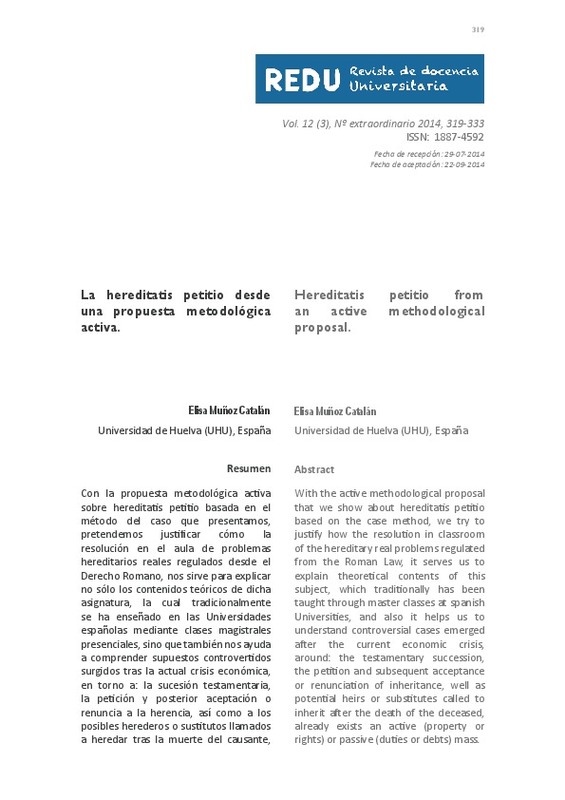JavaScript is disabled for your browser. Some features of this site may not work without it.
Buscar en RiuNet
Listar
Mi cuenta
Estadísticas
Ayuda RiuNet
Admin. UPV
La hereditatis petitio desde una propuesta metodológica activa
Mostrar el registro completo del ítem
Muñoz Catalán, E. (2014). La hereditatis petitio desde una propuesta metodológica activa. REDU. Revista de Docencia Universitaria. 12(3):319-333. https://doi.org/10.4995/redu.2014.5500
Por favor, use este identificador para citar o enlazar este ítem: http://hdl.handle.net/10251/137864
Ficheros en el ítem
Metadatos del ítem
| Título: | La hereditatis petitio desde una propuesta metodológica activa | |
| Otro titulo: |
|
|
| Autor: | Muñoz Catalán, Elisa | |
| Fecha difusión: |
|
|
| Resumen: |
[ES] Con la propuesta metodológica activa sobre hereditatis petitio basada en el método del caso que presentamos, pretendemos justificar cómo la resolución en el aula de problemas hereditarios reales regulados desde el ...[+]
[EN] With the active methodological proposal that we show about hereditatis petitio based on the case method, we try to justify how the resolution in classroom of the hereditary real problems regulated from the Roman Law, ...[+]
|
|
| Palabras clave: |
|
|
| Derechos de uso: | Reconocimiento - No comercial - Sin obra derivada (by-nc-nd) | |
| Fuente: |
|
|
| DOI: |
|
|
| Editorial: |
|
|
| Versión del editor: | https://doi.org/10.4995/redu.2014.5500 | |
| Tipo: |
|








